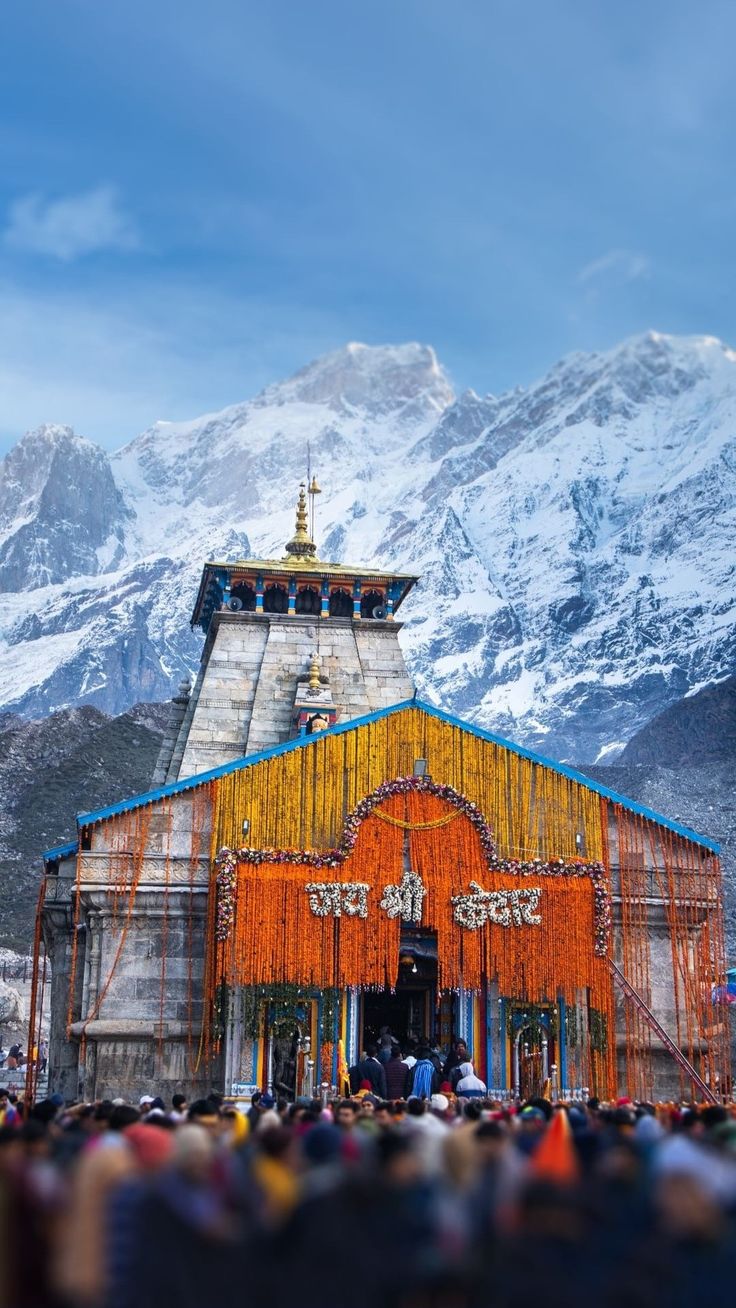Kedarnath: A Sacred Journey to Lord Shiva’s Abode
Introduction
Perched high in the Himalayas at an altitude of 3,583 meters, Kedarnath is one of the most revered and significant pilgrimage sites for Hindus. Known for its awe-inspiring natural beauty, Kedarnath is not just a spiritual center but also an embodiment of devotion, mystery, and divine blessings. It is home to the Kedarnath Temple, dedicated to Lord Shiva, and is considered one of the 12 Jyotirlingas—the holiest shrines of Lord Shiva in India. In this article, we explore the biography, history, daily life impacts, and significance of Kedarnath, along with its cultural and societal importance.
1. The History and Mythology
It’s origins can be traced back to ancient Hindu scriptures and legends. The temple is linked to the epic Mahabharata, where the Pandavas, after the great war, sought Lord Shiva’s blessings to absolve their sins. According to the myth, Lord Shiva, in the form of a bull, attempted to escape the Pandavas’ plea but eventually settled in Kedarnath. It is said that his form appeared here as a Jyotirlinga, a radiant light representing the divine energy of Lord Shiva.
The Temple is believed to have been constructed by the Pandavas themselves, though the current structure was rebuilt in the 8th century by the famous saint Adi Shankaracharya. Despite being located in a region prone to severe weather conditions, Kedarnath has stood resilient for centuries, maintaining its sanctity and importance.
2. The Temple: A Spiritual Beacon
The Temple is an architectural marvel, built in traditional North Indian style with a massive stone structure and a large shikhar (spire). Its impressive stone walls are adorned with intricate carvings, depicting scenes from Hindu mythology, adding to the temple’s ethereal beauty. The temple houses the Jyotirlinga, which is worshipped by thousands of devotees each year.
The temple remains open for a few months every year due to extreme weather conditions, typically from April to November. During the winter months, the deity is moved to Ukhimath, a temple located at a lower altitude, and the rituals continue in a smaller form. The temple’s spiritual aura and the rituals performed there have been a source of immense peace and devotion for pilgrims from around the world.
3. Daily Life and Rituals
While the environment around Temple is rugged and cold, the daily life at the temple revolves around strict rituals and prayers. Early mornings begin with the aarti, an offering of light and prayers to Lord Shiva. The priests perform a series of rituals, including the abhishek (ceremonial bathing of the idol), the panchamrit puja (offering of five sacred ingredients), and other devotional acts.
Despite the harsh conditions of the region, pilgrims arrive daily to offer their prayers and take part in the rituals. The temple is especially crowded during the auspicious month of Shravan and Mahashivaratri, when thousands of devotees gather to seek Lord Shiva’s blessings.
The temple area, surrounded by snow-capped peaks, pristine rivers, and scenic valleys, provides a serene environment for reflection and prayer. It serves as a peaceful refuge from the hustle and bustle of everyday life, where one can connect with their spirituality in a profound way.
4. The Trek: A Spiritual and Physical Challenge
One of the most notable aspects of visiting Kedarnath is the trek to reach the temple. The journey from Gaurikund, a base camp located at an altitude of about 1,982 meters, to Kedarnath is a 16-kilometer trek that takes pilgrims through a challenging and scenic route. The trek involves ascending steep paths, navigating rugged terrain, and enduring the elements, making it a physically demanding but spiritually enriching journey.
For many, the difficult trek symbolizes the struggles and challenges one faces in life and is seen as a path of purification. The trek is not just a physical activity but a spiritual pilgrimage, where every step is taken with reverence, devotion, and prayer.
The route also offers breathtaking views of the surrounding Himalayan ranges, pristine rivers, and cascading waterfalls, making the trek not only a test of endurance but also an opportunity to witness nature’s beauty at its best.
5. Significance in Hinduism
It is one of the 12 Jyotirlingas, making it one of the most important temples dedicated to Lord Shiva in India. The temple is especially significant because it is believed that worshipping Lord Shiva at Kedarnath provides spiritual liberation (moksha) and absolves devotees of their sins. The connection between Lord Shiva and It has deep roots in Hindu mythology, and the temple’s prominence is cemented by its association with the Pandavas.
Every year, thousands of pilgrims undertake the arduous journey to Kedarnath to seek divine blessings and spiritual peace. It is also a symbol of strength and resilience, as the temple has withstood countless natural calamities and continues to inspire awe and reverence.
6. The Role in Modern Society
It continues to play a significant role in the lives of millions of Hindus. Beyond its religious significance, the Kedarnath pilgrimage brings economic and cultural benefits to the region. The annual influx of pilgrims and tourists boosts local businesses, from trekking services to accommodation and local handicrafts.
It is also part of the larger Char Dham Yatra, which includes Yamunotri, Gangotri, and Badrinath, forming one of the most important pilgrimage circuits in India. The pilgrimage promotes a sense of unity, spirituality, and connection with the divine.
Additionally, Kedarnath’s remote location and pristine environment highlight the need for environmental conservation. The region’s natural beauty and biodiversity play an important role in inspiring eco-tourism, and efforts are being made to preserve the environment while accommodating the growing number of visitors.
7. FAQs
- What is the best time to visit?
The best time to visit Kedarnath is during the months of May to November, when the temple is open. The Shravan month and Mahashivaratri are especially significant times for pilgrimage. - How difficult is the trek?
The 16-kilometer trek is moderately difficult, with steep ascents and rugged paths. However, pilgrims of various ages and fitness levels undertake the trek with dedication, as the spiritual benefits far outweigh the physical challenges. - Is accessible by road?
While It cannot be accessed directly by road, the base camp at Gaurikund is reachable by road, from where the trek to the temple begins. Helicopter services are also available for those who prefer not to trek. - Can non-Hindus visit Kedarnath?
Yes, Temple is open to all, irrespective of religion. While it is a prominent Hindu pilgrimage site, people from different religious backgrounds are welcome to visit and experience the sacred environment. - Is accommodation available near Kedarnath?
Basic accommodation is available at Gaurikund, Kedarnath, and nearby towns. During the peak pilgrimage season, it is advisable to book accommodation in advance.
Conclusion
It is a divine destination that combines both spiritual significance and natural beauty. From its rich mythology and historical importance to the challenging trek and the sense of devotion it evokes, Kedarnath continues to be a beacon of hope, faith, and resilience. The temple’s timeless appeal draws millions each year, making it not just a pilgrimage but an experience that transcends the physical journey and touches the soul. A visit to Kedarnath is not just about reaching a sacred temple; it’s about embarking on a transformative journey that brings spiritual fulfillment and a deeper connection to the divine.











Ride To Toronto Airport offers convenient transportation services to Toronto Pearson International Airport, ensuring stress-free travel for passengers in the Greater Toronto Area.
Experience top-notch service with Cambridge Airport Taxi, your preferred choice for Cambridge to YYZ transportation. Trust the premier Cambridge Airport Limo Service for a luxurious and hassle-free ride.